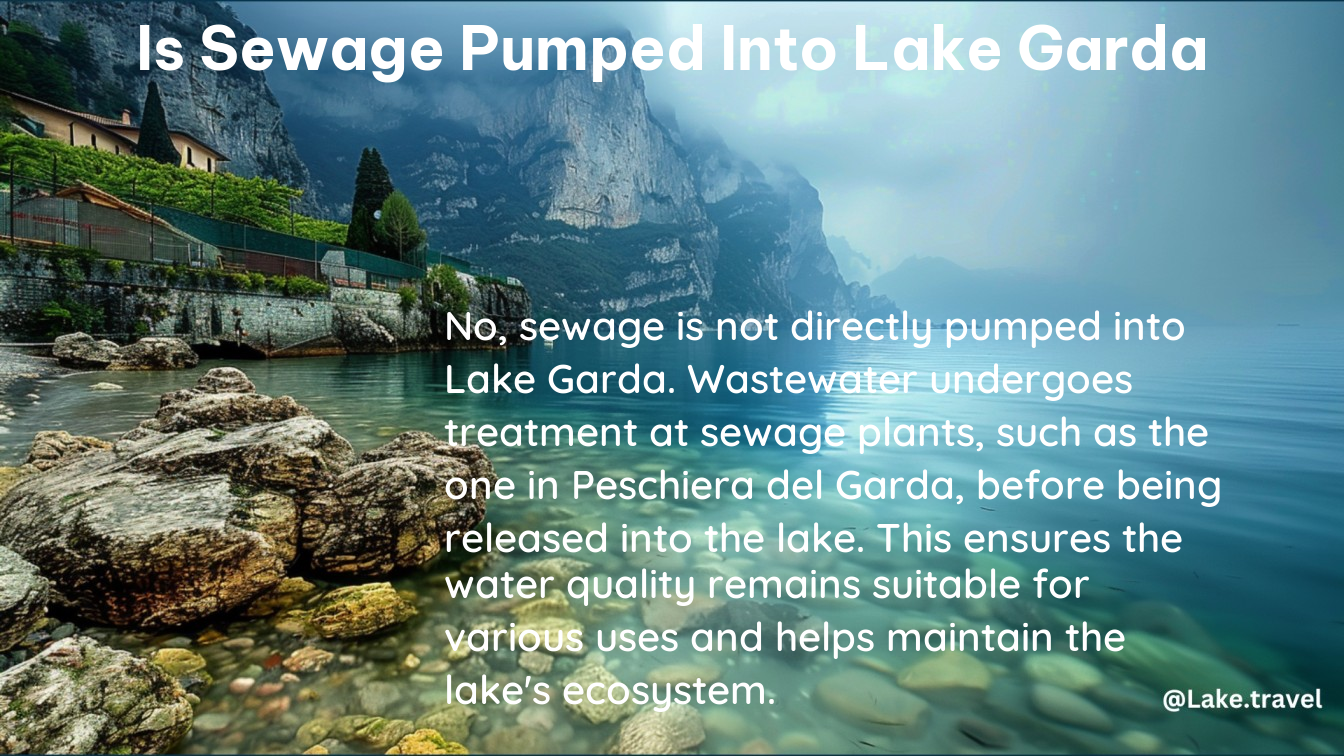Lake Garda, the largest lake in Italy, has been the subject of ongoing efforts to protect it from pollution caused by combined sewer overflows (CSOs). The INTCATCH program, funded by the European Union, has installed advanced treatment systems and real-time monitoring tools to address this issue.
The INTCATCH Program: Protecting Lake Garda from CSOs
The INTCATCH program has implemented a comprehensive solution at one of its demonstration sites, Villa Bagatta, to treat sewage before it is discharged into Lake Garda. The system includes:
- Salsnes Filter Rotating Belt Filter System: This system removes, on average, 39% of suspended solids from the wastewater.
- Granular Activated Carbon Filter: This filter helps to further purify the water by removing contaminants.
- TrojanUV3000®PTP System: This UV disinfection system inactivates microorganisms, ensuring the water is safe for discharge into the lake.
Xylem’s Filtration and UV Solution at Peschiera del Garda

In addition to the INTCATCH program, Xylem has also installed a filtration and UV solution at the Peschiera del Garda treatment plant, which handles all sewage in the area. This system includes:
- Leopold Filter: This filter uses sand ranging in diameter between 1.3 and 2 mm to optimize particle capture, effectively removing contaminants from the wastewater.
- Wedeco UV System: The Wedeco TAK 55 UV disinfection system breaks down bacteria and reduces energy consumption, ensuring the treated water can be safely used for agricultural purposes downstream.
The Importance of Protecting Lake Garda
Lake Garda is a popular vacation destination, and its water quality is crucial for the local ecosystem and tourism industry. The measures taken by INTCATCH and Xylem demonstrate the importance of investing in advanced filtration and UV technology to safeguard water sources and the communities that rely on them.
Key Facts about Lake Garda and Sewage Treatment
| Fact | Description |
|---|---|
| Lake Garda Size | The largest lake in Italy, with a surface area of 370 square kilometers. |
| Sewage Treatment Challenges | The lake’s popularity as a tourist destination and the surrounding urban areas create significant challenges in managing sewage and preventing pollution. |
| INTCATCH Program | A European Union-funded initiative that has installed advanced treatment systems and real-time monitoring tools to address combined sewer overflows (CSOs) and protect the lake. |
| Salsnes Filter System | Removes, on average, 39% of suspended solids from the wastewater at the Villa Bagatta demonstration site. |
| TrojanUV3000®PTP System | Inactivates microorganisms in the treated wastewater before it is discharged into the lake. |
| Xylem’s Filtration and UV Solution | Installed at the Peschiera del Garda treatment plant, it includes a Leopold filter and a Wedeco UV system to further purify the water. |
| Downstream Water Use | The treated water from the Peschiera del Garda plant can be safely used for agricultural purposes. |
In conclusion, the efforts to protect Lake Garda from sewage pollution are crucial for the lake’s ecosystem, tourism, and the communities that rely on its water. The INTCATCH program and Xylem’s solutions demonstrate the importance of investing in advanced filtration and UV technology to ensure the long-term health and sustainability of this valuable water resource.
References:
– Lake Garda, Italy: INTCATCH Program Protects Against Combined Sewer Overflows
– Filtration and UV Solution for Lake Garda
– The Waters of Lake Garda: The Catchment System and Condition of the Lake
